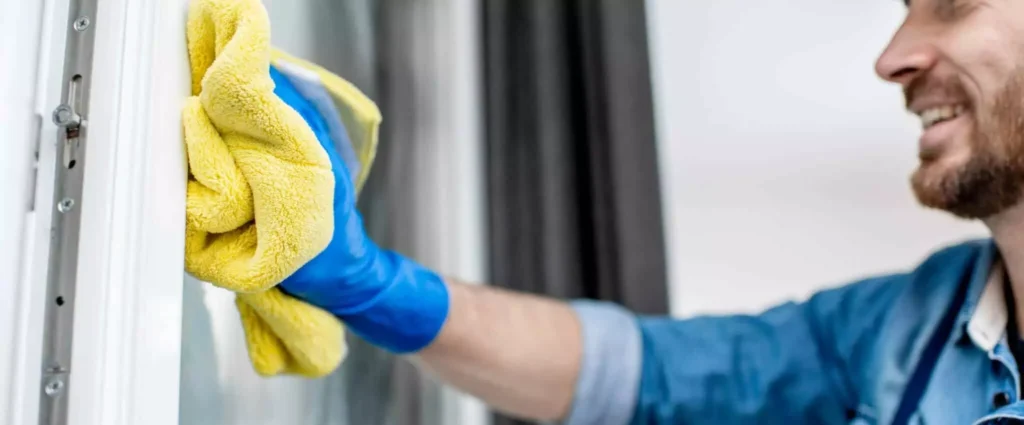To clean cloth awnings, start by brushing off any excess dirt and dust. Then, use a mild dish soap and water solution to gently scrub the awning with a soft bristle brush, working from top to bottom.
For stubborn stains or mildew, refer to the manufacturer’s guidelines and avoid using bleach on all types of awning fabric. Finally, allow the awning to air dry. Remember to rinse thoroughly to remove any soap residue. Avoid using a pressure washer on fabric awnings as it may cause damage.
Importance Of Cleaning Cloth Awnings
Proper cleaning and maintenance of cloth awnings is essential to maintain their aesthetic appeal and prevent damage from dirt and mold. Regular cleaning helps remove dirt, dust, and stains that can accumulate on the surface of the awnings and keep them looking fresh and clean.
To clean cloth awnings, start by brushing off excess dirt and dust from the surface using a soft bristle brush. Then, wash the awning with a mild dish soap and water solution, using gentle scrubbing motions with the brush. Be sure to clean both the front and back of the awning, paying attention to any stubborn stains or spots.
For stubborn stains and mildew, you may need to follow the guidelines provided by the awning manufacturer, as different fabrics may require different cleaning methods. Avoid using bleach unless recommended by the manufacturer. After cleaning, allow the awning to air dry completely before retracting or rolling it up.
By regularly cleaning and maintaining your cloth awnings, you can prolong their lifespan and keep them looking their best for years to come.

Credit: www.amazon.com
Recommended Cleaning Process
Regular cleaning is essential to maintain cloth awnings. Begin by inspecting for damage, then gently brush off dirt and dust. Use a mild dish soap and water solution to scrub the awning with a soft bristle brush. For stubborn stains and mildew, follow the manufacturer’s guidelines.
Rinse thoroughly and allow it to air dry.
| Recommended Cleaning Process |
|---|
|
Cleaning Tips And Best Practices
Discover the best practices for cleaning cloth awnings with this quick guide. Learn how to effectively remove dirt and dust, scrub the fabric gently, and handle stubborn stains and mildew. Safely air dry your awning for a beautiful and refreshed outdoor space.
When cleaning cloth awnings, it’s important to avoid harsh chemicals. Always opt for gentle cleaning solutions to prevent damage. Never use pressure washers as they can cause tearing or stretching. Instead, use a soft bristle brush and a mild dish soap and water solution for proper rinsing. Start from the top and work your way down, ensuring thorough cleaning. Be gentle when scrubbing to avoid damage. For stubborn stains and mildew, refer to the awning manufacturer’s guidelines and ensure proper air drying. Following these tips and best practices will help maintain the longevity and appearance of your cloth awnings.

Credit: washh.com
Diy Awnings Cleaner Recipe
|
When it comes to cleaning cloth awnings, it’s important to ensure gentle treatment of the fabric. Start by brushing off excess dirt and dust from the awning, including the binding at the bottom. Then, mix a solution of mild dish soap and water and scrub the awning using a soft bristle brush, working from top to bottom. Be gentle and avoid rubbing too hard, as this is for dirt removal, not stains or mildew. For stubborn stains and mildew, follow the manufacturer’s guidelines and avoid using bleach on every type of awning fabric. After cleaning, allow the awning to air dry completely. Rinse thoroughly until all soap residue is removed. Avoid using a pressure washer, as it may damage the fabric. Repeat the cleaning process if necessary. Can you power wash a fabric awning? Rinse with a hose and prevent mildew and mold by ensuring the fabric or vinyl awnings are as dry as possible before rolling or retracting them. Never use a pressure washer on your awnings, as it may cause damage. What is the best DIY cloth awning cleaner? To remove mold or mildew, try a solution of bleach and water or vinegar and water. However, be sure to rinse the awning thoroughly after using these solutions. For stubborn stains on awnings, clean with a soft bristle brush and repeat the process if necessary. |
Additional Care For Specific Awning Fabrics
To properly care for canvas, acrylic, natural, or vinyl fabrics, it is important to take preventive measures to avoid rust stains and ensure ongoing maintenance. Start by regularly inspecting the awning for any rips or tears and promptly taking action to repair them. Brush off excess dirt and dust from the fabric, paying attention to the binding at the bottom of the awning. When cleaning, begin at the top and work your way down using a mild dish soap and water solution, along with a soft bristle brush. Take care to be gentle and avoid rubbing too hard. It is crucial to follow the manufacturer’s guidelines for stubborn stains and mildew, as different awning fabrics may require specific treatments. Allow the fabric to air dry thoroughly before enjoying your clean and beautiful awnings.

Credit: www.gabespride.com
Frequently Asked Questions For How To Clean Cloth Awnings
How Do You Get Mildew Out Of A Fabric Awning?
To remove mildew from a fabric awning, try a mixture of bleach and water or vinegar and water. Apply the solution to the affected area, scrub gently with a soft bristle brush, and rinse thoroughly. Avoid using a pressure washer as it may damage the awning.
How Do You Clean A Cloth Awning?
To clean a cloth awning, brush off excess dirt and dust. Wash with a mild dish soap and water solution using a soft brush. Rinse thoroughly and allow it to air dry. For stubborn stains and mildew, follow the manufacturer’s guidelines.
Avoid using pressure washers.
Can You Power Wash A Fabric Awning?
Power washing a fabric awning is not recommended as it may cause damage. Instead, use a mild dish soap and water solution with a soft bristle brush to scrub the awning. Be gentle and avoid rubbing too hard. For stubborn stains or mildew, follow the manufacturer’s guidelines.
Allow the awning to air dry.
What Is The Best Diy Awning Cleaner?
The best DIY awning cleaner is a mild dish soap and water solution. Scrub the awning gently with a soft bristle brush, working from top down. For stubborn stains or mildew, follow the manufacturer’s guidelines. Allow the awning to air dry thoroughly before enjoying its clean appearance.
Conclusion
Regular cleaning of your cloth awnings is crucial to extend their lifespan and maintain their appearance. Follow the manufacturer’s guidelines, using mild soap and water solution, and avoid using harsh chemicals. Inspect for stains and mildew, and tackle them gently with the appropriate cleaning method.
Allow the awning to air dry thoroughly. Regular maintenance will keep your cloth awnings looking fresh and appealing.


